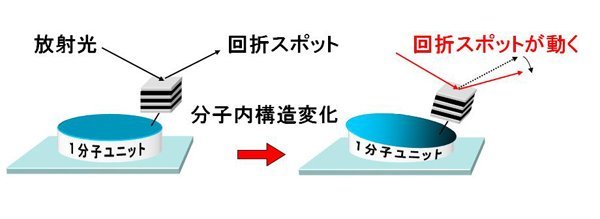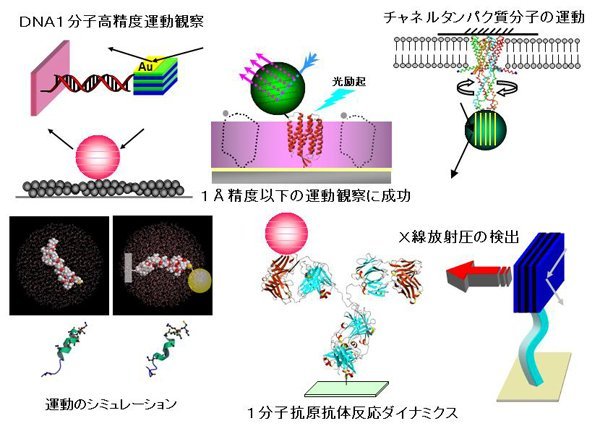SASAKI C Yuji
(Professor/Division of Transdisciplinary Sciences)
Department of Advanced Materials Science /Single Molecular Observations, X-rays, Electrons, Microscope,New Scientific Methodology in Transdisciplinary Sciences

Career Summary
1986.3: Graduated, Faculty of Engineering, Tohoku University
1991.3: Doctor of Engineering, Tohoku University
1991.4: Research Scientist, Advanced Research Laboratory, Hitachi Ltd.
1997.12: Senior Scientist,The Japan Synchrotron Radiation Research Institute/SPring-8
1998.10-2001.9: Researcher, PRESTO/Japan Science and Technology
2001.4-2003.3: Guest Professor, Institute for Protein Research, Osaka University
2001.10-2006.3: Research Head Director, Protein Structure and Functional Mechanisms, CREST/Japan Science and Technology
2005.10-present: Research Head Director, Novel Measuring and Analytical Technology Contributions to the Elucidation and
Application of Life Phenomena, CREST/Japan Science and Technology
2008.11-present: Professor, The University of Tokyo
Educational Activities
Graduate school: Introductions of Transdisciplinary Scientific Methodology, Introductions of Advanced Nano-probes
Research Activities
On the basis of advanced materials science, we are developing the technology needed to achieve new science and methodologies. Our projects are observed biological systems, soft-matter systems, and nano-materials. We are creating a very large transdisciplinary area of sample systems.
Recently, we succeeded in time-resolved (-ms) x-ray observations of dynamical motions of individual potassium channels in aqueous solutions. In this single molecular detection system, which we call diffracted x-ray tracking (DXT), we observed the rotating motions of an individual nanocrystal, which is labeled to a specific site in individual functional molecules, using time-resolved Laue diffraction. DXT can monitor the real-time dynamics of individual molecules and specific sites in individual single protein molecules. New features of the mechanism of functional biological molecules were found in the above study, and we are considering many applications.
We will achieve high precision measurements in interdisciplinary areas. Additionally, we will propose both new methodologies and new functional material systems.

Principle of Diffracted X-ray Tracking (DXT)

Sample systems for DXT
Literature
1) Y. C. Sasaki, K. Yasuda, Y. Suzuki, T. Ishibashi, I. Satoh, Y. Fujiki, S. Ishiwata:
Two-dimensional Arrangement of a Functional Protein by Cysteine-Au Substrate Interaction: Enzyme Activity and
Characterization of a Protein Monolayer, Biophys. J. 72, 1842-1848 (1997).
2) Y. C. Sasaki, M. Ishibashi, M. Yanagihara, K. Toyota, A. Adachi, Y. Suzuki, N. Yagi:
Tracking of a Single Nanoparticle with X-ray Diffraction, Phys. Rev. E., 62, 3843-3847 (2000).
3) Y. C. Sasaki, Y. Okumura, S. Adachi, N. Yagi:
Picometre-scale Dynamical X-ray Imaging of Single DNA Molecules, Phys. Rev. Lett., 87, 248102-248105 (2001).
4) Y. Okumura, T. Oka, M. Kataoka, Y. Taniguchi, Y. C. Sasaki:
Picometer-scale Dynamical Observations of Individual Membrane Proteins: the Case of Bacteriorhodopsin, Phys. Rev. E, 70, 021917-1-7 (2004).
5) Y. C. Sasaki, T. Higurashi, T. Miyazaki, Y. Okumura, N. Oishi:
Observations of X-ray Radiation Pressure Force on Single Gold Nanocrystals, Applied Physics Letters, 89, 053121 (2006).
6) T. Sagawa, T. Azuma, Y. C. Sasaki:
Quantification of Protein-ligand Bindings from Structural Fluctuations of Single Molecules, Biochem. Biophy. Res. Commun. Vol. 335, 770-775 (2007).
7) H. Shimizu, M. Iwamoto, F. Inoue, T. Konno, Y. C. Sasaki, S. Oiki:
Global Twisting Motion of Single Molecular KcsA Channel upon Gating, Cell 132, 67-78 (2008).
Other Activities
The Japanese Society for Synchrotron Radiation Research
The Biophysical Society of Japan
The Protein Science Society of Japan
The Surface Science Society of Japan
Biophysical Society (U.S.A)
Protein Society (U.S.A)
Future Plan
To achieve the acquisition of advanced information in interdisciplinary areas, we hope to contribute to material sciences, life sciences, nanotechnology, and biotechnology. Measuring internal molecular motions and dynamical localization will be particularly important in the future.
Additionally, we should consider user-friendliness and availability to researchers and developers. We will demonstrate the potential of new measurements by using advanced light sources.
For education, our goal is to develop students who can conduct scientific research and contribute to practical developments. Now, it is very important for scientists to develop this new interdisciplinary field.
Until now, I, as an interdisciplinary researcher, have been practicing a combination of physics, metrology, material science, crystallography, biophysics, structural biology, physiology, and molecular biology. By understanding fundamental physics, we understand advanced science and nano- or bio-technology in interdisciplinary areas.
In addition, it is important to recognize your immaturity through many discussions and collaborations with excellent international scientists. We aim to provide interesting environments in order to open the eyes of young students.
Messages to Students
"Now" is a very exciting and interesting era. An immediate effect is that the basic science community is waiting for progress in the area of interdisciplinary science research.
Research in the field of conventional science has unresolved problems. We need new ideas from young scientists. In this era, we feel that young researchers can have a dream.
